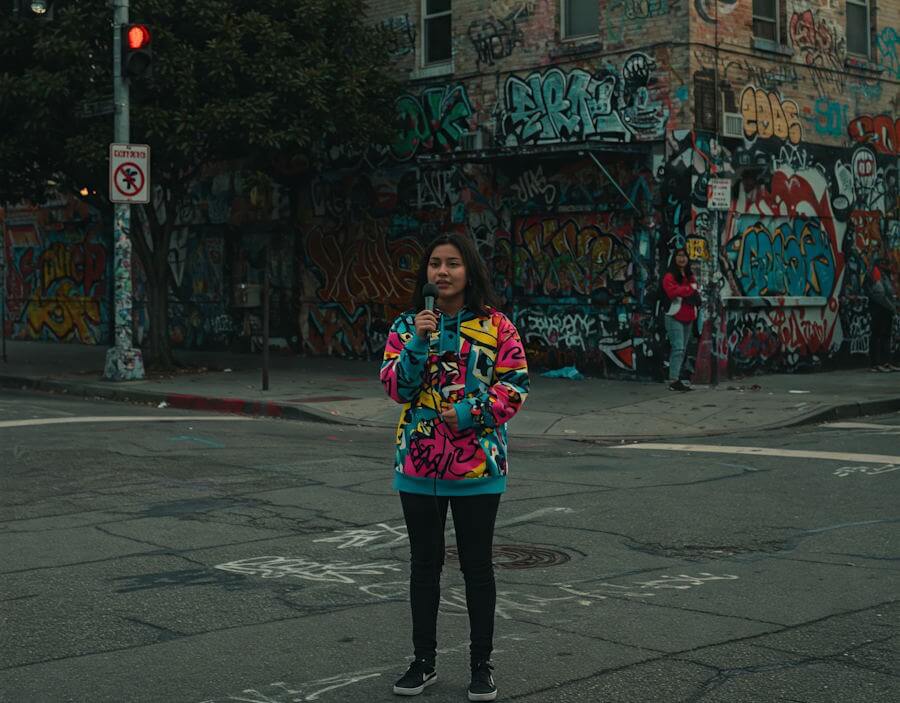Urban storytelling is a powerful narrative form that captures the soul and dynamics of city life. It encapsulates the diverse experiences of individuals and communities, showcasing the unique characteristics that define urban environments. Through the art of storytelling, one can explore not only the physical landscapes of a city but also the emotional landscapes shaped by its inhabitants. This multifaceted approach allows writers and storytellers to weave tales that resonate with both residents and visitors alike.
The essence of urban storytelling lies in its ability to evoke feelings and foster connections. Each narrative serves as a bridge, linking people from distinct backgrounds, cultures, and perspectives. In bustling city streets, where anonymity often prevails, stories can provide a sense of shared experience and communal understanding. By focusing on the lived experiences of everyday citizens, urban narratives can illuminate hidden truths and spark empathy among diverse audiences.
Moreover, urban storytelling transcends geographic boundaries, enabling individuals to glimpse the everyday life and struggles faced by their fellow urban dwellers. This exchange is fundamental in fostering a sense of belonging and solidarity within communities. As urban storytellers delve into the rich tapestry of city life, they highlight the interplay between culture, history, and environment, ultimately demonstrating how these elements coalesce to create a vibrant urban identity.
In this ongoing exploration of urban narratives, we will examine the techniques and strategies employed by storytellers to authentically convey the essence of cities. By doing so, we will uncover the transformative power of stories that not only capture the attention of individuals but also nurture an emotional connection to the urban milieu.
Understanding Your Audience
When embarking on the journey of crafting urban narratives, understanding your audience is paramount. The dynamics of a city encompass a rich tapestry of demographics, interests, and experiences that shape how different groups perceive urban life. To create a compelling story that resonates deeply, it is essential to recognize the unique characteristics of your audience, including their age, cultural background, socioeconomic status, and personal experiences with the city.
Different demographics bring diverse perspectives to urban narratives. For instance, a young professional may find vibrancy in the fast-paced lifestyle of a metropolitan area, while a long-time resident may cherish the historical significance of local landmarks and community gatherings. By identifying these varying perspectives, narratives can be tailored to evoke an emotional response that captures the nuances of the city’s experience.
Moreover, the interests of your audience can significantly influence their connection to a story. Some individuals may engage deeply with cultural elements such as art, music, and food, while others may prioritize themes of community, social justice, or environmental issues. A narrative that intertwines these interests creates a stronger bond with the audience, making them feel a greater attachment to the story being told.
Additionally, understanding the different experiences of your audience enables you to address common challenges or aspirations they may face within the urban landscape. For instance, a story that highlights the resilience of communities during adversity can resonate powerfully with those who have confronted similar struggles. Tailoring narratives to reflect the life experiences of these diverse groups fortifies the connection between the storytellers and the city dwellers, fostering a shared sense of identity and belonging.
Choosing the Right Setting
Selecting the right setting is a fundamental aspect of storytelling, particularly when aiming to immerse readers in the vibrant atmosphere of an urban environment. The physical spaces within a city play a crucial role in shaping narratives, as they can evoke emotions, memories, and a sense of belonging among the audience. By carefully choosing locations that resonate with the themes of your story, you can significantly enhance the overall impact of your narrative.
Urban settings, ranging from bustling markets and serene parks to iconic landmarks and hidden alleyways, each offer unique atmospheres that can influence how a story is perceived. For instance, a narrative that takes place in a lively café during a rainstorm can elicit feelings of intimacy and warmth while juxtaposed against the chaotic backdrop of the city. In contrast, a story set in a desolate industrial district may evoke a sense of isolation and reflection. By painting vivid pictures of these settings, writers can anchor their characters’ experiences in specific locations, making the narrative feel more tangible and relatable.
The significance of these physical spaces extends beyond mere description; they serve as characters in their own right, often reflecting the cultural identity and social dynamics of the city. Writers should consider how their chosen settings interact with the characters and themes throughout the narrative. For example, a character’s journey through various neighborhoods can symbolize personal growth or community ties. The interplay between setting and character development not only enriches the storytelling but also helps readers forge a deeper connection with the city’s culture.
Ultimately, the art of selecting the right setting lies in understanding how these urban landscapes shape human experiences. By integrating sensory details and cultural references into your storytelling, you can create immersive narratives that make readers feel the pulse of the city, fostering a sense of connection to the urban experience.
Character Development in Urban Stories
To create compelling urban narratives, character development plays a crucial role, as characters often become the lens through which readers engage with the essence of a city. A well-crafted protagonist should not merely exist within the city’s backdrop; rather, they should embody its spirit, reflecting the experiences, struggles, and aspirations prevalent in urban life. In this context, relatable protagonists help establish a connection with the audience, allowing them to see themselves mirrored in the characters’ journeys, challenges, and triumphs.
Diversity in character representation not only enriches the narrative but also reflects the multifaceted nature of urban environments. Cities are melting pots of cultures, backgrounds, and stories, and it is imperative that these variations are authentically portrayed through characters. Engaging with a diverse range of characters enables a more profound understanding of the socio-economic, political, and cultural dynamics within an urban setting. These varied perspectives can illuminate broader themes of belonging, identity, and resilience, providing readers with a nuanced view of city life.
Furthermore, the relationship between characters and the city serves as an essential element in strengthening the narrative. The city often influences the characters’ choices, motivations, and growth, creating an intricate interplay that can heighten the emotional depth of the story. For instance, a character’s struggle with gentrification might evoke empathy and spark a conversation about social justice, thus enriching the storyline while simultaneously addressing critical urban issues.
In summary, effective character development in urban storytelling hinges on creating relatable and diverse characters whose relationships with the city can resonate with readers. By doing so, writers can not only craft engaging narratives but also foster empathy and understanding of the complexities embedded in urban life.
Crafting Emotional Arcs
Emotional arcs serve as the backbone of compelling storytelling, particularly in urban narratives, where the vibrancy and complexities of city life can deeply impact characters and their experiences. An effective emotional arc comprises three key components: tension, conflict, and resolution. By engaging these elements, writers can draw readers into a narrative that resonates on both personal and communal levels, ultimately allowing them to feel the pulse of the city.
To build tension, writers should introduce situations that challenge characters both externally and internally. In an urban setting, such challenges may involve societal issues, cultural clashes, or personal dilemmas. For example, a character may grapple with the hustle of city life while trying to achieve their dreams, embodying the struggle to balance ambition with the realities of urban living. This tension can be heightened by surrounding characters and environments that amplify the stakes, creating a landscape of emotions that feels alive and dynamic.
Conflict arises when characters confront obstacles that impede their desires. In an urban context, this could be a variety of factors, such as socioeconomic disparities, gentrification, or even interpersonal relationships that add complexity to the narrative. By presenting authentic conflicts, writers allow their characters to grow, showcasing how the city’s challenges evoke resilience, passion, and vulnerability. These emotional highs and lows create a rhythm that engages readers, as they are not just passive observers but participants in the unfolding drama.
The resolution phase is crucial, as it provides closure and reflection. Here, characters may discover insights or achieve personal breakthroughs amid the chaos that urban life often encapsulates. A well-crafted resolution does not necessarily imply a neat ending but can instead reveal an understanding of the city’s multifaceted nature. By weaving together the emotional arcs of characters, writers foster a deeper connection between the narrative and readers, ultimately inviting them to feel the city through its stories.
Incorporating Local Culture and History
When crafting urban narratives, the integration of local culture and history is paramount. These elements not only enrich the storytelling experience but also serve as vital touchpoints that connect individuals to their urban environment. Incorporating cultural nuances, traditions, and historical context can provide an authentic lens through which to explore and convey the identity of a city. This authenticity is crucial in making narratives resonant and relatable.
Local culture encompasses the unique customs, practices, and beliefs that define a community. These cultural attributes can be woven into stories to create a vivid tapestry that reflects the city’s character. By emphasizing local festivals, culinary traditions, or art forms, storytellers can evoke strong emotions and foster a sense of belonging among residents. Additionally, cultural elements can invite outsiders to appreciate and engage with a city’s vibrancy, thereby broadening the audience of the narrative.
Moreover, historical context is equally significant in storytelling. By anchoring narratives in the rich tapestry of a city’s past, writers can illuminate the evolution of the urban landscape and its inhabitants. Historical events, notable figures, and forgotten tales can serve as powerful backdrops that deepen the audience’s understanding of the present. For instance, narratives that explore the impact of industrialization or social movements can reveal how these forces shaped contemporary life in the city.
Infusing local culture and history into urban stories is a means of celebrating community pride while fostering awareness. At its best, this approach encourages readers and listeners to view their surroundings through a newly informed perspective. Ultimately, narratives that embrace these elements are not only more engaging but also pivotal in nurturing a shared identity among those who inhabit the city.
Using Sensory Details to Evoke Emotion
In the realm of storytelling, particularly when narrating urban experiences, the judicious use of sensory details plays a crucial role in engaging the audience’s emotions. Sensory details refer to the vivid descriptions that trigger the reader’s senses – sight, sound, smell, taste, and touch. By incorporating these elements, a writer can construct a more immersive narrative that takes readers directly into the heart of the city. This approach enables them to not only visualize the setting but also to experience it on a fundamental level.
For instance, when describing a bustling city street, a writer might evoke the cacophony of sounds: the honking of taxis, the occasional laughter of pedestrians, and the faint strumming of a street musician’s guitar. These auditory details create a vibrant atmosphere that transports readers into the lively scene. Similarly, vivid descriptions of the sights, such as bright neon lights reflecting off rain-slicked pavements or the intricate architecture of buildings, bring the urban landscape to life, allowing readers to visualize the environment in which the story unfolds.
Moreover, incorporating olfactory details can profoundly affect emotional resonance. The smell of fresh bread wafting from a nearby bakery or the pungent aroma of street food can trigger nostalgic feelings or a sense of hunger, enhancing the experience. Touch may be illustrated through descriptions of the rough texture of old brick walls or the comfortable warmth of a sunlit park bench. Each of these sensory elements contributes to a rich tapestry of experiences that heighten emotional engagement.
In summary, using sensory details is an effective narrative strategy that can make urban storytelling resonate with readers. By appealing to their senses, writers can convey the essence of city life, inviting the audience to feel, smell, and hear the urban environment while delving deeper into the emotional landscape of their narratives.
Engaging with the Community
Community engagement is a vital component in crafting urban narratives that resonate with both residents and visitors. In a city, the stories woven through its streets and neighborhoods are often best told by those who experience them daily. Involving local residents in the storytelling process not only enriches the narrative but also fosters a deep sense of belonging and ownership within the community. By encouraging individuals to contribute their voices and perspectives, urban stories achieve authenticity and emotional depth.
One effective approach to community engagement is through collaborative workshops and storytelling events. These gatherings provide a platform for residents to share their personal experiences, memories, and insights about their city. Participants can engage in activities that prompt them to reflect on their unique connections to certain locations, creating a tapestry of narratives that highlights the city’s diversity. Additionally, hosting these events in local neighborhoods can further strengthen the bond between participants and their environment, reinforcing the concept that stories are not only situated within the city, but also within the people who inhabit it.
Another method to engage the community is to leverage digital platforms for storytelling. Online forums, social media campaigns, or dedicated websites can invite residents to submit personal narratives, photographs, or artwork that depict their lived experiences. For instance, a project that encourages residents to document their favorite local spots can produce a wealth of stories that celebrate the city’s vibrancy. Such initiatives not only capture diverse voices but can also serve as valuable resources for urban planners, helping them understand the needs and sentiments of local residents.
By actively involving the community in the storytelling process, urban narratives can take on a richer dimension, encouraging empathy and a deeper understanding of the city’s multifaceted identity.
Conclusion: The Transformative Power of Stories
Urban storytelling serves as a vital bridge between individuals and their surroundings, allowing for a deeper connection to the intricate tapestry of city life. Through well-crafted narratives, the emotional resonance of these stories can foster a profound sense of belonging among residents. When people see their experiences and feelings reflected in the tales of others, it creates a shared understanding and strengthens community ties. This emotional appeal is crucial in transforming an ordinary urban landscape into a vibrant community filled with rich histories and unique perspectives.
Moreover, storytelling in urban settings cultivates empathy, helping individuals from diverse backgrounds understand one another and appreciate the complexities of city living. By sharing stories that highlight various aspects of life, whether related to struggles, triumphs, or mundane routines, narrators invite listeners to walk in someone else’s shoes. Such immersive experiences broaden perspectives and encourage a culture of inclusivity, ultimately promoting a stronger, more cohesive community.
The impact of these narratives extends beyond individual encounters; they can reshape the broader perception of a city. Residents are more likely to engage with their environment positively when they feel emotionally connected to their stories. The narratives shared can inspire collective action, such as community projects or local initiatives aimed at improving urban spaces. In this way, effective storytelling can act as a catalyst for change, urging individuals to become active participants in their city’s development rather than passive observers.
In summary, the transformative power of storytelling lies in its ability to create emotional connections, foster empathy, and mobilize communities. By focusing on the narratives that define our urban experiences, we can cultivate a profound appreciation for our cities and the diverse voices within them. This emotional resonance is not only vital for personal growth but also essential for fostering a thriving urban community.




